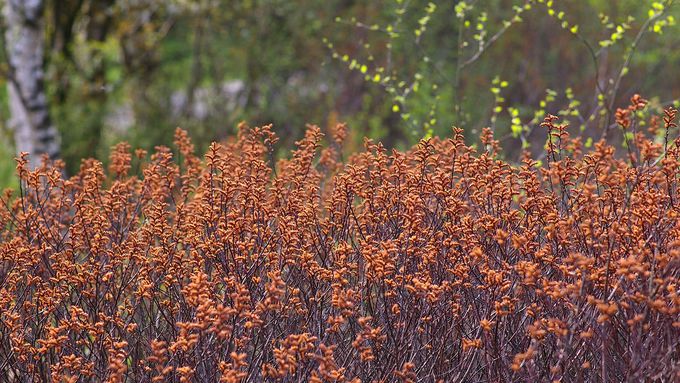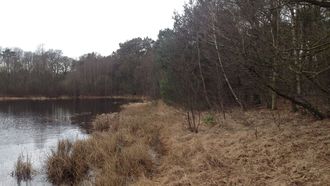The heath pond in the area „Am Hanfteich“ is to be cut off of trees to work against diminishment and shading oft he valuable nutrient-poor bank areas. © Biologische Station Kreis Steinfurt, Hartmut Storch
download picturemain content
News
25.01.2018
First actions to preserve biodiversity have started in the Natura 2000 site "Am Hanfteich" in Saerbeck
Last year, the federal states of North Rhine-Westphalia and Lower Saxony launched a cross-national project to preserve biodiversity. As part of the Integrated LIFE Project "Atlantic Region DE", for example existing heathlands and dune landscapes, species-rich Nardus grasslands, and nutrient-poor standing waterbodies are being optimized or restored. At the same time, populations of the Project’s focus species living in these habitats, such as the common spadefoot, the European tree frog and the crested newt, are to be reinforced. The first actions in the Natura 2000 site "Am Hanfteich" in Saerbeck (County of Steinfurt) have now begun. The District Government of Münster in cooperation with the Lower Nature Conservation Authority of the County of Steinfurt and the Biological Station of the County of Steinfurt carries out the implementation of these actions.
The Hanfteich is a typical heath pond as they were formerly common in the sandy areas of the Westphalian Bay. It had been used for roasting hemp. Several endangered or critically endangered plant or animal species occur there, e.g. moor frog and crested newt, bog-myrtle, floating water-plantain, and marsh St. John's wort.
At several bank sections of the heath pond, willows and buckthorns have spread, bordered by birches, alders and pines. The trees reduce and shade the valuable nutrient-poor bank areas which are to be preserved; the fallen foliage of willows, birches and alders leads to eutrophication. In some areas, increased occurrence of the common rush already indicates a sedimentary deposition and nutrient enrichment. Therefore, the actions started now at the Hanfteich and the adjacent small waterbody aim at cutting off the trees from the bank areas as much as possible. The resulting wood is removed from the protected area. Due to the currently very wet weather conditions, however, in some areas this probably may only take place in late summer. Also in late summer, parts of the waterbodies will be desludged. To carry out this work, it is necessary to build access roads to these areas. These will be closed again after completion of all work.
The LIFE-IP „Atlantic Region DE“ had been approved officially by the EU Commission in October 2016. Therewith, the project is the first German Integrated LIFE Project within the LIFE priority area “Nature and Biodiversity”. Altogether, 16.875 million Euros are available in both federal states during the project duration of ten years; the European Commission funds 60 %. The overall responsibility for the Project lies with the Ministry for Environment, Agriculture, Conservation and Consumer Protection of the State of North Rhine-Westphalia (MULNV) as the Coordinating Beneficiary. The overall coordination of the LIFE-IP, the implementation of the various actions as well as public relations were assigned to the District Government of Münster.





